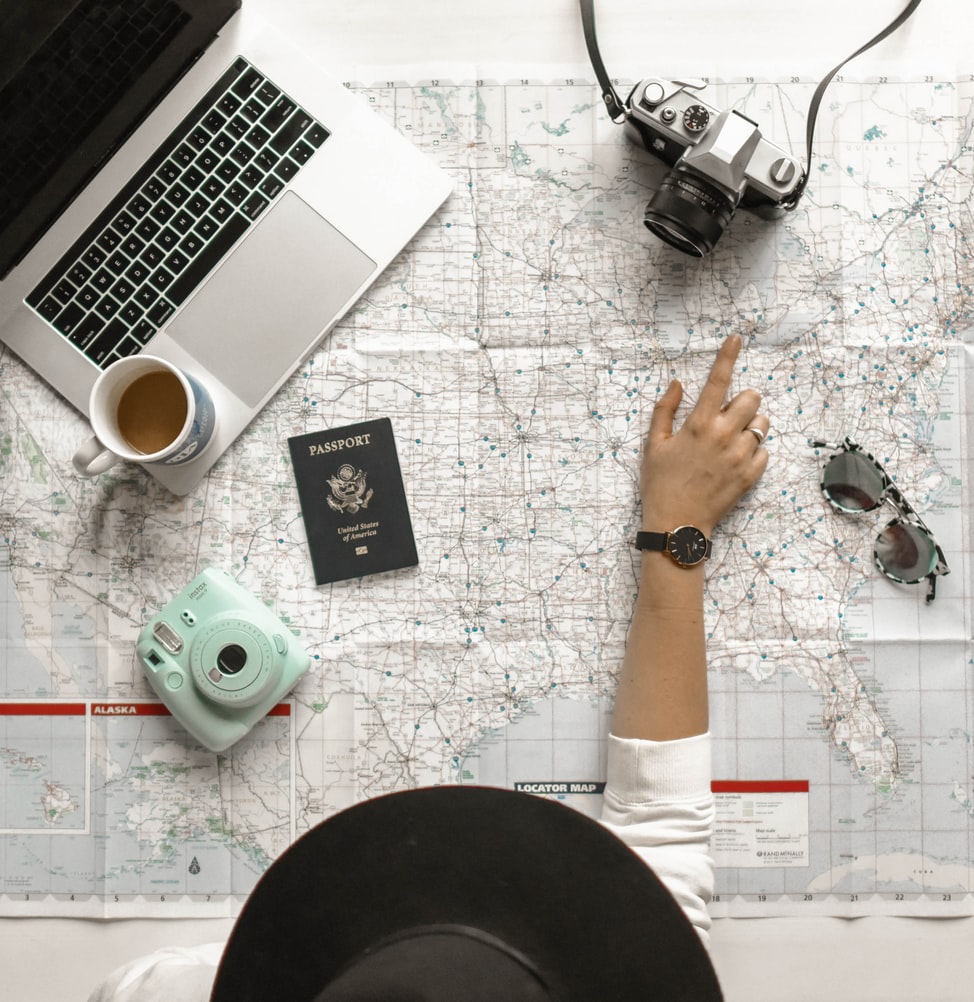Social media has changed the way we do a lot of things, but none more so than travel.
Gone are the days of flicking through a travel brochure. Now, travelers turn to their favorite influencers for destination research, tap into reviews to choose accommodations, and research things to do on various different social channels .
TripAdvisor gets more than 50 million unique visits a month, showing just how many people actively seek out advice from the sources they trust the most: other travelers.
Reviews and personal traveler stories now form a vital part of trip planning and, thanks to social media, access to information like this has become easier than ever.
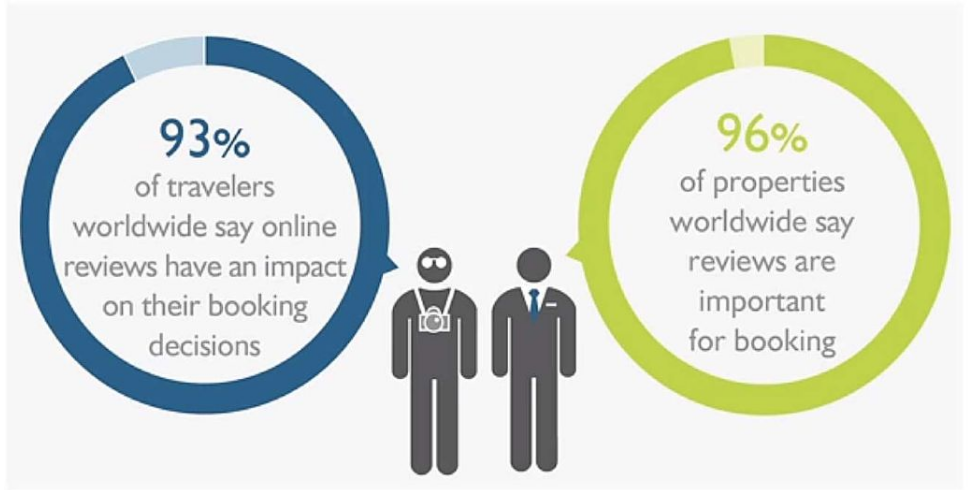
So how exactly is social media changing travel?
1. Promoting Even the Most Remote Destinations
In the past, travelers tended to stick to a small set of destinations. These were popular hotspots that travel agencies promoted heavily every year; places like Mexico, the Carribean, and domestic attractions in the US.
It was rare for people to visit further flung places, particularly those that received little to no coverage in travel brochures and on television. People just didn’t know about or try to explore places that weren’t talked about in the media.
But the advent of the internet and regular flights to more obscure places has meant travelers are increasingly choosing to visit more remote destinations.
Social media is fueling this hunt for untrodden hotspots.
A study by Booking.com found that social media plays a big role in helping travelers choose where they’re going to go.
That’s not surprising, really.
What is surprising is that 51% of respondents said they actively chose places that none of their friends had been to.
This isn’t particularly hard: the world is a big place and there’s bound to be a huge number of destinations that friends and family haven’t visited. But to actively seek this out with the help of social media is a gamechanger for the travel industry.
It’s pushing travel companies to promote more obscure destinations – in fact, the more obscure the better, in many cases.
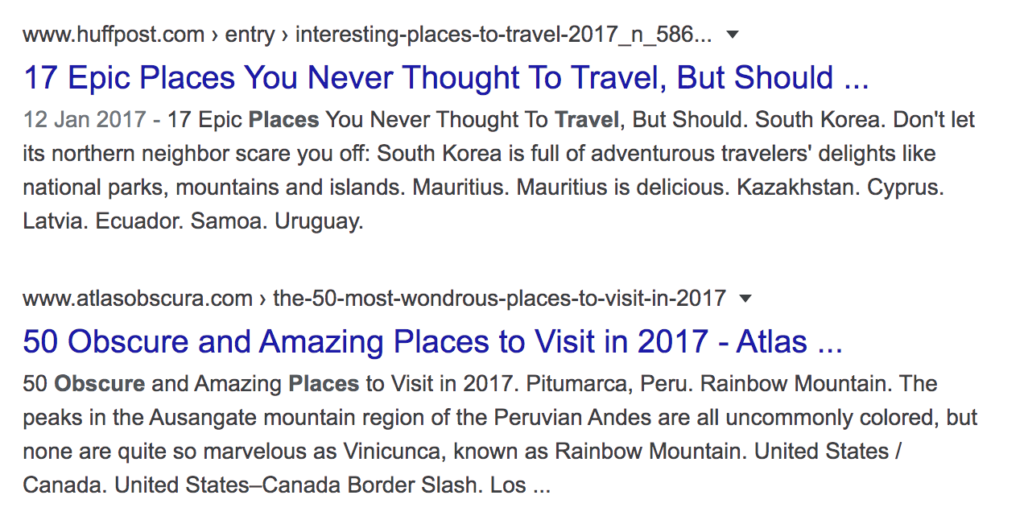
As a result, there has been an uptick in the number of travel brands that specialize in trips to remote destinations, and if you search Google for “most remote places to travel”, pretty much every company has voiced their opinion.
Alternatively, just check out the number of Instagram posts that use hashtags related to remote destinations and “off the beaten path” places.
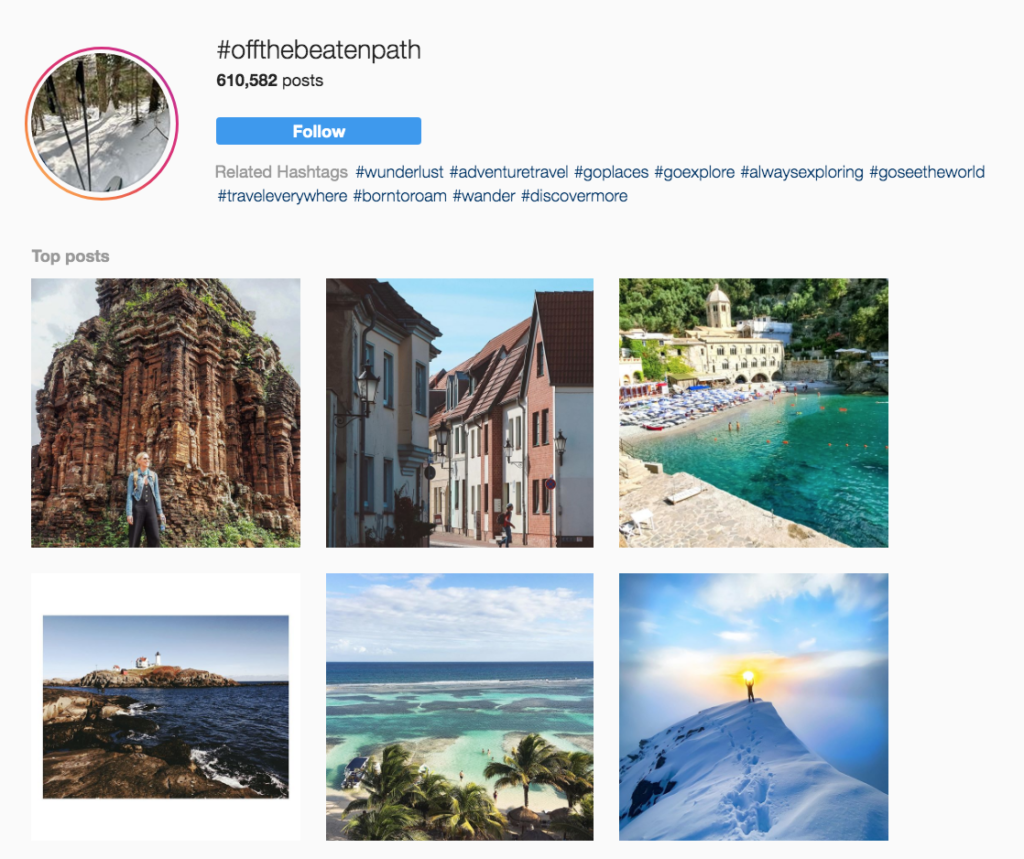
Social media provides a platform for travelers to discover unique destinations they might otherwise not have considered.
They might simply see a post under a hashtag of a single attraction in a country they’ve never heard of before and immediately put it on their bucket list.
2. An Explosion of Inspiration
Social media hashtags let us browse inspiring pictures of destinations from anywhere we choose.
#Barcelona has over 54 million posts; even #TheGambia has almost 100,000 images. Type in the hashtag for any destination and you’ll be greeted with a vibrant digital brochure of things to do and sights to see straight from the mouths (or cameras) of other travelers.
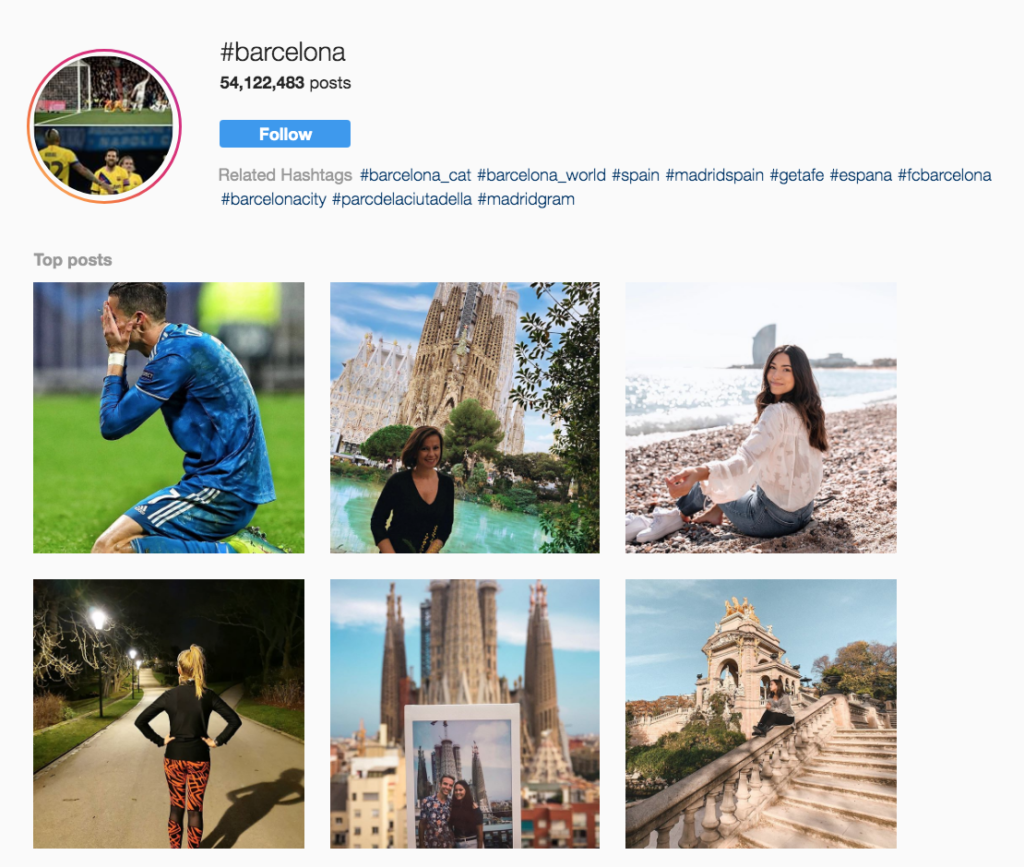
This means that travelers no longer rely on travel providers to give them things to do. Instead, they use social media to create their own unique and personalized itineraries through hashtags, their favorite influencers, and review sites.
Easyjet’s Look&Book tool is an example of this in action.
The airline identified this trend of travelers searching for destination inspiration on social media and incorporated it into their app. It allows users to search Instagram photos in the app itself and, after determining the location of a post they love, Easyjet serves up potential flights to that destination.
This shows that the travel planning process has been flipped on its head.
Instead of travelers choosing a destination and then researching things to do and exciting sights to see, they do things the other way round and base their travel decisions around things they want to do.
3. Is It ‘Grammable?
Instagram has become a huge part of our lives. Not only do a large number of people turn to it to pass the time and get product inspiration, but it’s also changing the way travelers make decisions.
Before, travelers might have determined whether a place was in their budget, had activities they were interested in, and was going to be warm at the time of year they were visiting before they booked.
Now, there’s a different set of priorities. One survey found that 40% of consumers under 30 prioritize how Instagrammable a destination is over other things.
If it won’t look good in photos, it won’t make the bucket list.
This goes hand in hand with searching for destination inspiration. The visual nature of Instagram means travelers are hooked on how places look and how they can impress their followers with amazing pictures from incredible places.
4. Celebrity Experiences Matter
There’s no hiding the fact that when a celebrity visits a destination, it suddenly gets more coverage and a surge of bookings from other travelers. According to the same survey by Booking.com we mentioned above, 17% of users pay close attention to where celebrities stay and look for similar accommodation.
Well-known campaigns like Airbnbs celebrity influencer campaign show this in action.
Airbnb is a brand with its finger on the pulse of social media trends. When they realised that travelers were coveting the places celebrities stayed, they invited household names to stay in some of their most elegant accommodations and share the experience on social media.
The campaign generated an incredible amount of exposure for the brand and reached almost one billion Instagram users over a two-year period.

Social media gives everyday people a sneak peek into the lives of celebrities, as well as a chance to live like them if only for a short period of time. This has impacted the way people travel as they strive to be more like the celebrities they admire.
5. Switching Up Interactions With Travelers
Social media has given travel brands better access to travelers than ever before.
They now have an extraordinary amount of information about their likes, dislikes, ages, interests, and goals, and can use this to create far deeper connections than a flick through a brochure ever could.
Through the instant and connective nature of social media, brands can talk to their customers, answer any questions, and create a following of loyal fans.
Travelers are becoming ambassadors by sharing their photos, videos, and stories from their travels, which is helping brands attract new customers and improve the travel experience.
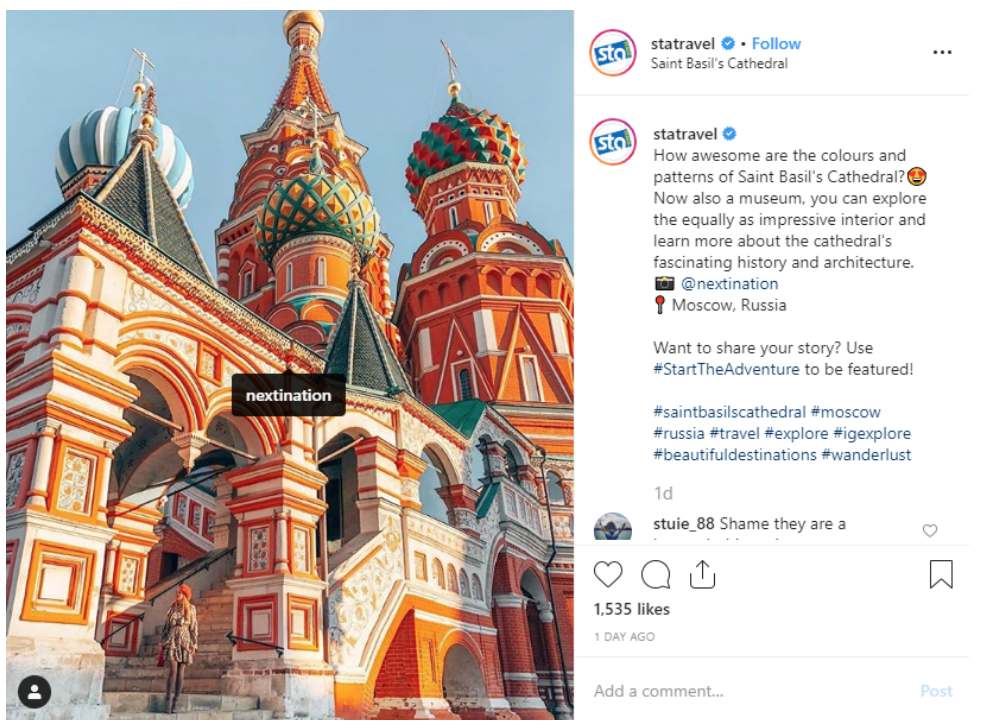
STA Travel regularly shares user generated content from its travelers, which has been proven to increase brand engagement and boost conversions.
And now, with an increasing number of travel brands across a range of different social media platforms, travelers can pick and choose the ones they relate the most to.
They can essentially create a unique experience that ties into their beliefs.
For example, a traveler that wants a local, sustainable experience is likely to opt for a different travel provider than someone who wants a luxury, all-inclusive stay somewhere.
Brands are able to create tight communities of similar travelers on social media by sharing the kind of content they’re most interested in.
TINT powers brands that want to get in on the changes that social media has brought to travel. Through social media walls that can be displayed in hotel lobbies, to gathering UGC to share across Instagram, Twitter, and Facebook, there are plenty of tools to help you get started.
6. Constantly Connected
In the past, travelers would “disappear” when they went on holiday,
They didn’t have phones to keep them connected with home and they basically went off the radar until they landed back on home soil.
Today, we are constantly connected via social media. Travelers can keep in touch with friends and family while they visit even the most remote places in the world.
But, more importantly, they are constantly on the hunt for things to do that they can share with their friends and family. They can share a selfie they took at the top of a mountain in a split-second and they can live stream a video of them eating a deep fried cricket while it’s actually happening.
While on a trip, 60% of travelers, and 97% of Millennial travelers share their travel photos.
This constant connectedness has encouraged travel brands to step up their game.
Hotels now regularly invite their guests to share their travel experiences on social media, while activity providers encourage travelers to book on their mobile devices and tag them in any social posts.
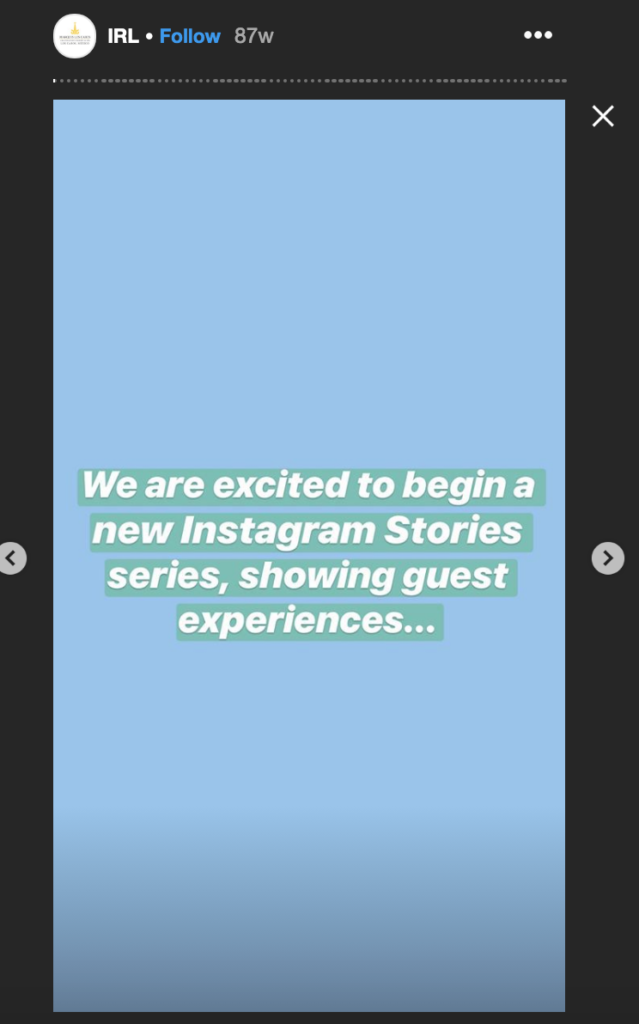
The Marquis Los Cabos hotel in Mexico uses Instagram Stories to share its guests’ day-to-day experiences. This creates deeper connections with its guests and provides inspiration for people who are considering a stay there.
Social Media Has Been a Game Changer
There’s no denying that social media has dramatically changed the way we travel. The constant connection means travelers hold more power than ever before. They not only use social media to figure out where to go, they also use it to find activity inspiration, to communicate with travel providers while they’re away, and to share their experiences as they go.
Social media is now an intrinsic part of traveling, and it’s time that travel bands embraced this new reality.
Are you a travel brand that wants to learn how to fully leverage the power of social media and user generated content? Talk to us to learn how we help the worlds most successful travel brands make the most of their UGC.

